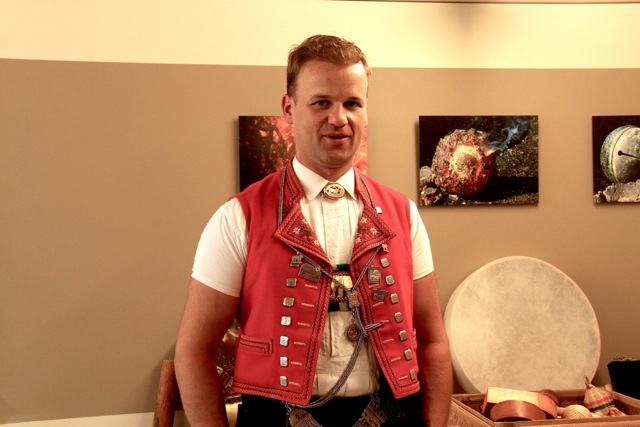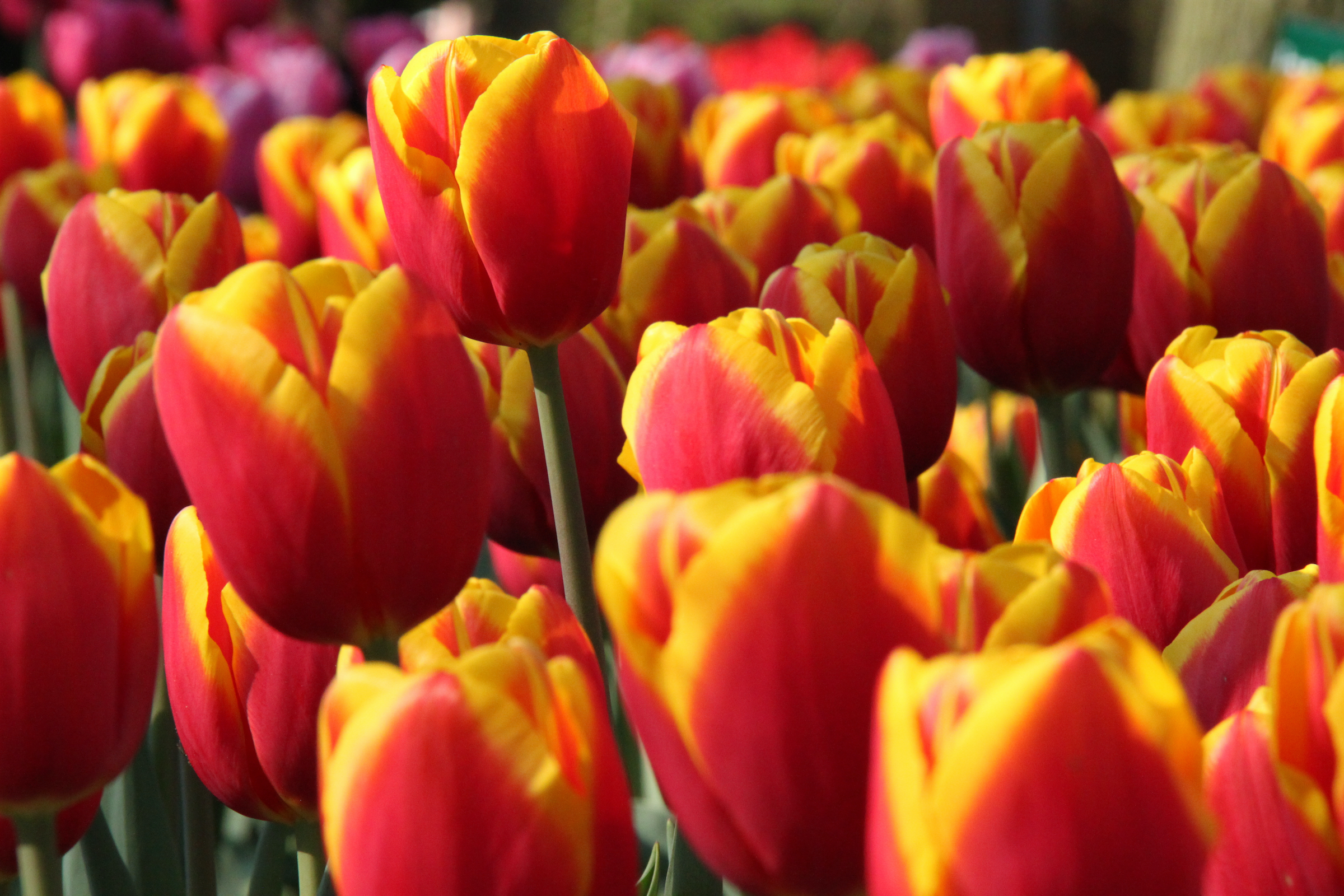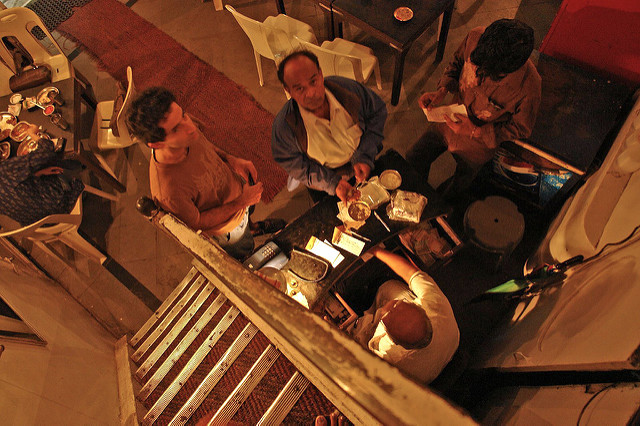 Matthias Ammann puts his hands into his pockets, smiles at us, and yodels effortlessly. Of course he would. He has been yodeling since the age other children learn to gurgle and crawl. He then looks at our stricken faces and sings one note at a time, making us repeat it.
Matthias Ammann puts his hands into his pockets, smiles at us, and yodels effortlessly. Of course he would. He has been yodeling since the age other children learn to gurgle and crawl. He then looks at our stricken faces and sings one note at a time, making us repeat it.
It is all very pleasant, in a ‘Maria deconstructs Do-Re-Mi for the clueless Von Trapp kids’ manner. The trouble begins when he again sings the whole string together and expects us to sing after him. Nobody seems willing to move. Oh, well. I close my eyes, channel my inner Kishore Kumar and let go. Easy peasy.

(Image courtesy Switzerland Tourism)
 He follows this up with a session on the traditional Talerschwingen, rolling a coin around the inner rim of an earthenware bowl. I hold one of the heavy bowls on my palm, rotating it slowly. Matthias takes his cue from this resonant rhythm and yodels along with it. I may be an ace multi-tasker otherwise, but right now, all my energies are focused on keeping the bowl from falling off.
He follows this up with a session on the traditional Talerschwingen, rolling a coin around the inner rim of an earthenware bowl. I hold one of the heavy bowls on my palm, rotating it slowly. Matthias takes his cue from this resonant rhythm and yodels along with it. I may be an ace multi-tasker otherwise, but right now, all my energies are focused on keeping the bowl from falling off.
At the Klangwelt Sound Forge in Toggenburg, just a couple of hours by train from Zurich, yodeling lessons are just one of the attractions. On the upper floor, there is always some exhibition on; that month, it is of cowbells from around the region. In the next room, there are sound experiments for curious children and adults. Then there is a Sound Wellness room where my aching back cries out for a relaxing massage based on musical vibrations (before I am dragged away by the rest of the unsympathetic group).
In what must be another unwritten Murphy’s Law, it is sunny throughout the time we are indoors. Cut to early morning. We wake up to rain, which follows us during our hike through the picturesque Klangweg at the base of the Churfirsten mountain. This popular hike among the über-fit Swiss has 26 sound installations along the way. Each of them has been created by local artists, based on the music of the region.
The Klangweg (Sound Trail) started with the idea of making the hike more interesting for children. Now, says my guide, parents find it difficult to drag them away from each of the sound stations. Maximum fun with maximum noise. What is not to love?
Hansheiri Haas – “my teacher used to call me Ha Ha Ha” – is the perfect guide, long trained in music and passionate about the subject. It is a beautiful trail, with views of mountain peaks, lulling sounds of cowbells and crisp Swiss air. Using the annoying, insistent rain as an excuse, we walk only a small section of the trail. Here, we stop to blow into steel pipes; there, Hansheiri hits with his flat palms on a rock with large holes. There are suspended bells, quirky string instruments, large cups of water, all designed to make music.


My favourite is the Klangmühle, or the Soundmill, perhaps the only indoor installation in the entire trail. An instrument based on the Buddhist prayer wheel in a remote Swiss village. I am trying to wrap my head around the idea hours later at lunch when Hansheiri casually mentions that they recently found at an international music festival that the music tones of pygmies from Central Africa and people of Central Switzerland were identical. The music of world is indeed contained in a handful of notes.

With this in mind, a couple of days later, I venture forth to further the cause of Indo-Swiss musical ties by trying my hand at the alphorn. And Werner Erb, of the Crazy Alphorngruppe Arcas, is the perfect teacher. He keeps a straight face and urges us to purse our lips and blow, blow harder into the mouth pipe. All kinds of sounds emerge, most of which are like mating calls of wild animals. But Erb is kind and even manages to identify one of my notes as a C Flat.
Erb often works with alcoholics and drug addicts, so he plays the alphorn to unwind. But if you ask me, blowing into a thirteen feet long pipe is not relaxing; it is hard work. Not for him though. “I close my eyes and play, it feels like meditation,” he says. If I am finding it close to impossible to get a single clear note out of the alphorn, Erb travels the world playing jazz and world music on what someone remarked is the original Swiss mobile phone. Indeed, the alphorn was once used to signal danger, including imminent war (doubling up as, I suppose a weapon of mass destruction, given its size).


I went to Switzerland and returned without seeing a single snow-covered peak. I did not pose for photographs at Interlaken. I did not undertake a “Yash Chopra shot here” pilgrimage. Instead, I carved my own Swiss Sound of Music tour. Again, what is not to love?
***
This was published in The Hindu Sunday magazine on November 24, 2013 as Notes on a mountain…




Wow…i am curious to hear it. Some sound clip would’ve been nice.